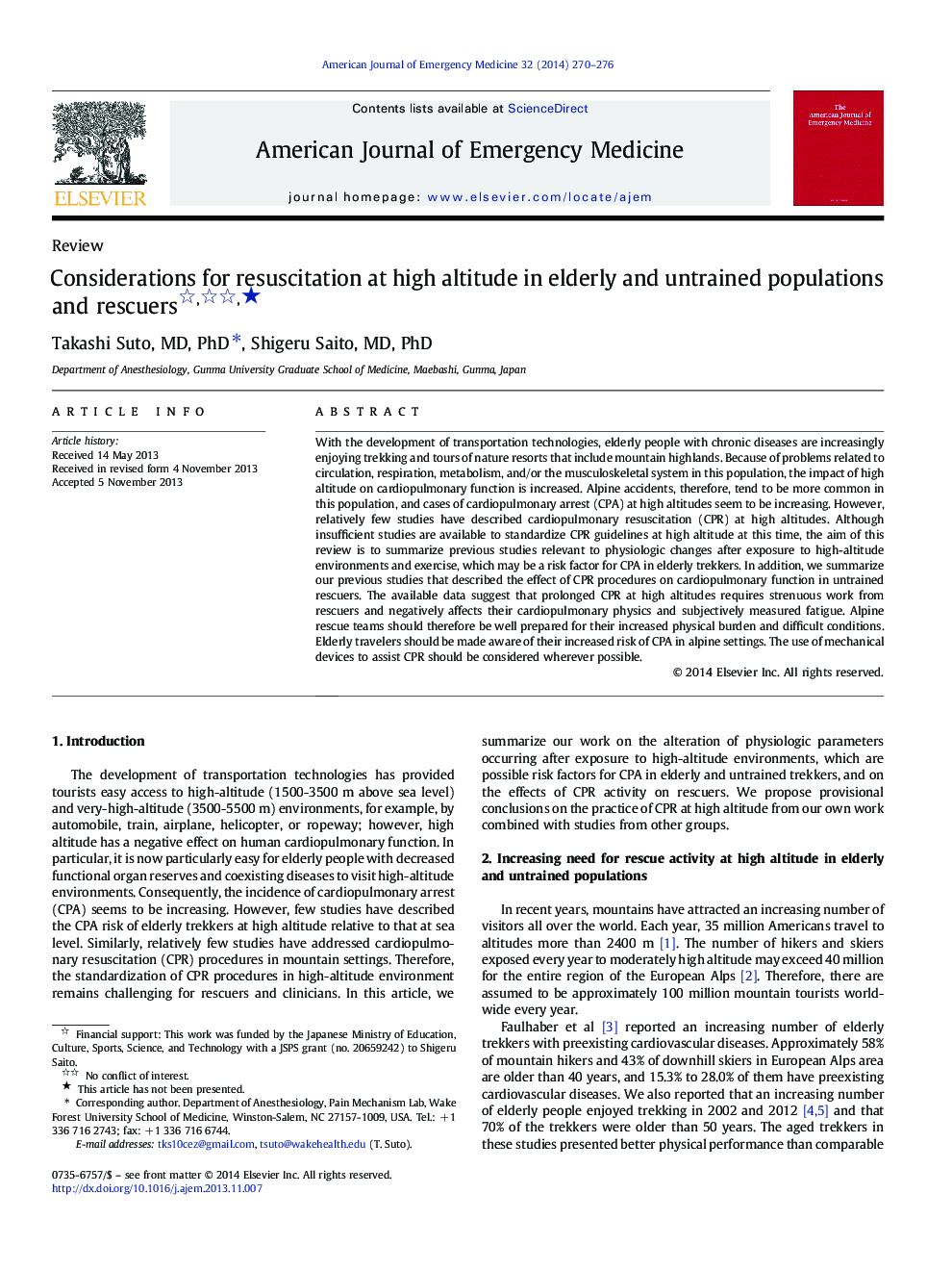| کد مقاله | کد نشریه | سال انتشار | مقاله انگلیسی | نسخه تمام متن |
|---|---|---|---|---|
| 3223979 | 1588120 | 2014 | 7 صفحه PDF | دانلود رایگان |

With the development of transportation technologies, elderly people with chronic diseases are increasingly enjoying trekking and tours of nature resorts that include mountain highlands. Because of problems related to circulation, respiration, metabolism, and/or the musculoskeletal system in this population, the impact of high altitude on cardiopulmonary function is increased. Alpine accidents, therefore, tend to be more common in this population, and cases of cardiopulmonary arrest (CPA) at high altitudes seem to be increasing. However, relatively few studies have described cardiopulmonary resuscitation (CPR) at high altitudes. Although insufficient studies are available to standardize CPR guidelines at high altitude at this time, the aim of this review is to summarize previous studies relevant to physiologic changes after exposure to high-altitude environments and exercise, which may be a risk factor for CPA in elderly trekkers. In addition, we summarize our previous studies that described the effect of CPR procedures on cardiopulmonary function in untrained rescuers. The available data suggest that prolonged CPR at high altitudes requires strenuous work from rescuers and negatively affects their cardiopulmonary physics and subjectively measured fatigue. Alpine rescue teams should therefore be well prepared for their increased physical burden and difficult conditions. Elderly travelers should be made aware of their increased risk of CPA in alpine settings. The use of mechanical devices to assist CPR should be considered wherever possible.
Journal: The American Journal of Emergency Medicine - Volume 32, Issue 3, March 2014, Pages 270–276